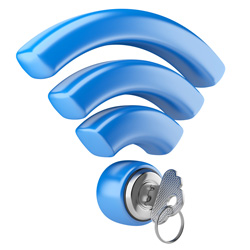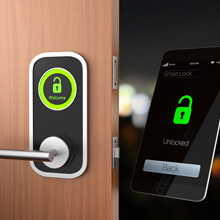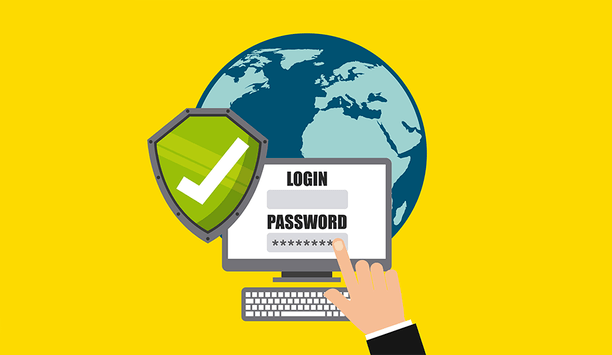 |
| Online wireless locks enable real-time online access control functionality |
Organizations require more than a “one-size-fits-all” approach from their access control technology. Today, integrators leverage a mix of both online wireless and offline locks to provide a more customized system for each end user. By combining online and offline locks, integrators have the ability to expand the limits of an access control system, with more doors and greater capabilities than ever before. In the end, customers benefit from greater flexibility, enhanced security and improved affordability.
In this article Mitchell Kane - President, GM at Vanderbilt Industries explains some of the ways online wireless and offline locks are being used in concert to create right-sized access control solutions. But first we need to understand the limitations and benefits of each lock type.
Online Wireless Locks
Online wireless locks enable real-time online access control functionality on doors and in areas that, in the past, might have been inaccessible or impossible to get wire to. For example, consider an office lobby built on a slab, with a decorated marble floor, and an entrance that is all glass with highly decorated treatments. For cabling purposes, such a site is either extremely difficult or impossible to reach. However, with a battery-powered wireless lock, it’s now possible to bring online functionality to that portal.
There are a few potential limitations to online wireless locks. For example, some manufacturers have yet to solve the problem of form factor. Because wireless locks require batteries and an antenna, in many cases the locking units are larger, less discreet and less aesthetically pleasing than the wired locks available today.
Also, the functionality of online wireless locks differs from manufacturer to manufacturer. Rest assured, you’ll get the basic online lock requirements, but critical features like lockdown and the ability to toggle might be missing, depending on the make and model.
 |
| Customers benefit from greater flexibility, enhanced security and improved affordability |
Another consideration of wireless locks is the way they behave to conserve power. An “always on” lock will consume batteries very quickly, which could become a maintenance nightmare. To address this issue, many locks enter a sleep mode. The lock will wake into transmit-receive mode if a user uses their card or if someone uses a key and bypasses the lock. If someone touches the handle to exit, a request to exit will wake the lock.
Since locks spend the majority of their time sleeping, sending manual override commands can be challenging. For example, if a user wants to manually and remotely unlock a door because there’s a visitor waiting to get in, some online wireless locks won’t receive the command until the lock wakes up. To combat this limitation, you could touch the handle on the exit side of the door to wake it up so it can receive the command — which is obviously a clunky solution — or adjust the locks to wake on a more frequent schedule or even pulse their status. However, doing this means you’ll be changing batteries frequently and, even if you set the lock to wake every two minutes, that’s still too long for someone to have to wait for the door to open. Some manufacturers have solved this problem by including a low-energy wireless radio that can be pinged to awaken the lock. These do use battery power, but to a much lesser degree. Unless you’re using a lock with one of these radios, you should avoid using online wireless locks on doors that would frequently require administrator override intervention and battery changes.
There’s one final consideration for wireless online locks. Because the locks are wireless, they can’t be hooked into the building Class E fire alarm system for evacuations. Therefore, you can’t use the locks on doors deemed as fire exits that also need to provide for free ingress during the alarm state.
Offline Locks
 |
| You must understand the pros and cons of each type of lock and also the environment you need to secure |
There are two basic types of offline locks. The first requires someone to manually pull the data from the lock to update the access control system. The second is a tourless offline lock that is able to establish a data connection or network-on-card connection to the access control system.
Offline locks should typically be used in applications and areas where you don’t need real-time reporting of alarm events, like door contacts and break-ins. The overwhelming majority of offline locks being used today are in higher education residence halls. Another common application is in industrial/commercial applications where real-time reporting is not required, such as with low-value storage closets, bathrooms or offices.
Offline locks have an important limitation: Because the database is stored in the locks themselves, they can’t hold the same amount of card holder data as an online lock connected to an access control system. With most enterprise online systems, the number of card holders who can use a door is essentially unlimited. With offline locks, the number of users is finite and based on the make and model of the lock. Difficulties occur when these user limits aren’t identified or understood and the offline lock is used.
Finally, if you want to take a user out of the system, you can’t do so without going to each lock. Updating the database is done either on a schedule (often when batteries are changed) or after an event (e.g., termination of an employee or following a break-in). In either case, traditional offline locks require someone to visit each lock with a handheld device to pull the data. Depending on the number of doors, this “sneakernet” method can be far from efficient.
The Best Of Online And Offline Locks
With most enterprise online systems, the number of card holders who can use a door is essentially unlimited. With offline locks, the number of users is finite and based on the make and model of the lock. |
When it comes to electronic locks, it’s never one-size-fits-all. However, here are a couple general rules of thumb beyond the advice given above:
- If you have a room that contains anything of value that you want to protect and you require a real-time reporting and audit trail, you should use an online lock.
- In perimeter applications where you need instant control, it’s necessary to use an online device.
- Doors that do not require real-time communication with the access control system are ideal for offline locks. In these applications, consider offline locks as a way to eliminate traditional keys and to better and more affordably manage credential and access privileges.
One Size Does Not Fits All
A common mistake is to start with one lock type to solve one problem and then use that same lock in other areas despite completely different circumstances. You must understand the pros and cons of each type of lock and have a proper understanding of the environment you need to secure. You need an access control system that is capable of concurrently supporting multiple electronic lock technologies. Only then can you craft a solution that takes the best of offline and the best of online wireless to create a secure environment that meets the needs of all cardholders, administrators and facility management.




























